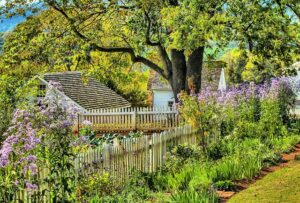Introduction
When it comes to outdoor structures, pergolas and gazebos are two popular options that can enhance the beauty and functionality of any outdoor space. While both provide shade and a place to relax, they have distinct differences that set them apart. In this article, we will explore the key characteristics and features of pergolas and gazebos, helping you understand the difference between the two.
Design and Structure
Pergolas: Pergolas are open-air structures that consist of vertical pillars or posts supporting a series of crossbeams or rafters. These crossbeams create a lattice-like roof that provides partial shade. Pergolas often have an open or partially enclosed design, allowing for better airflow and a more spacious feel. They are commonly used to define an outdoor space, create a focal point, or provide support for climbing plants.
Gazebos: Gazebos, on the other hand, are fully enclosed structures with a solid roof and walls. They are typically round, octagonal, or rectangular in shape and feature open sides or windows. Gazebos provide complete protection from the elements, offering shelter from rain, wind, and excessive sunlight. They are often used as outdoor dining areas, relaxation spots, or as a centerpiece in a garden.
Functionality and Use
Pergolas: Pergolas are versatile structures that can serve multiple purposes. They provide a shaded area for outdoor seating, dining, or entertaining. Pergolas can also be used as a support structure for hanging plants, vines, or even lighting fixtures. They create a visually appealing space that blends with the surrounding landscape, making them ideal for gardens, patios, or backyard retreats.
Gazebos: Gazebos are primarily designed for shelter and protection. With their enclosed structure, they offer a more intimate and private space compared to pergolas. Gazebos are often used as outdoor living rooms, outdoor kitchens, or even as a standalone spa enclosure. They provide a cozy and comfortable environment that can be enjoyed regardless of the weather conditions.
Materials Used
Pergolas: Pergolas can be constructed using various materials, including wood, vinyl, metal, or even composite materials. Wood is a popular choice for its natural look and versatility. Cedar, redwood, and pressure-treated pine are commonly used due to their durability and resistance to decay. Metal pergolas, such as those made from aluminum or steel, offer a more modern and sleek appearance.
Gazebos: Gazebos are typically built using wood, such as cedar or pressure-treated pine, due to its strength and ability to withstand outdoor elements. The solid roof and walls of a gazebo require sturdy materials to ensure stability and longevity. Some gazebos may also incorporate metal components, such as wrought iron or steel, for added strength and decorative purposes.
Cost
Pergolas: The cost of a pergola can vary depending on factors such as size, materials used, and additional features. Generally, pergolas tend to be more affordable compared to gazebos. A basic pergola kit can range from a few hundred to a few thousand dollars, while custom-built pergolas can cost several thousand dollars or more.
Gazebos: Gazebos are typically more expensive than pergolas due to their fully enclosed structure and additional materials required. The cost of a gazebo can vary greatly depending on the size, materials used, design complexity, and any additional features like electrical wiring or built-in seating. A basic gazebo can start at a few thousand dollars, while larger or more elaborate designs can cost tens of thousands of dollars.
Conclusion
In summary, pergolas and gazebos are both beautiful outdoor structures that can enhance any outdoor space. Pergolas offer partial shade and an open-air design, making them versatile and visually appealing. Gazebos, on the other hand, provide complete shelter and protection, creating a cozy and private space. The choice between a pergola and a gazebo ultimately depends on your specific needs, preferences, and budget.
References
– Better Homes & Gardens: bhg.com
– The Spruce: thespruce.com
– HomeAdvisor: homeadvisor.com












